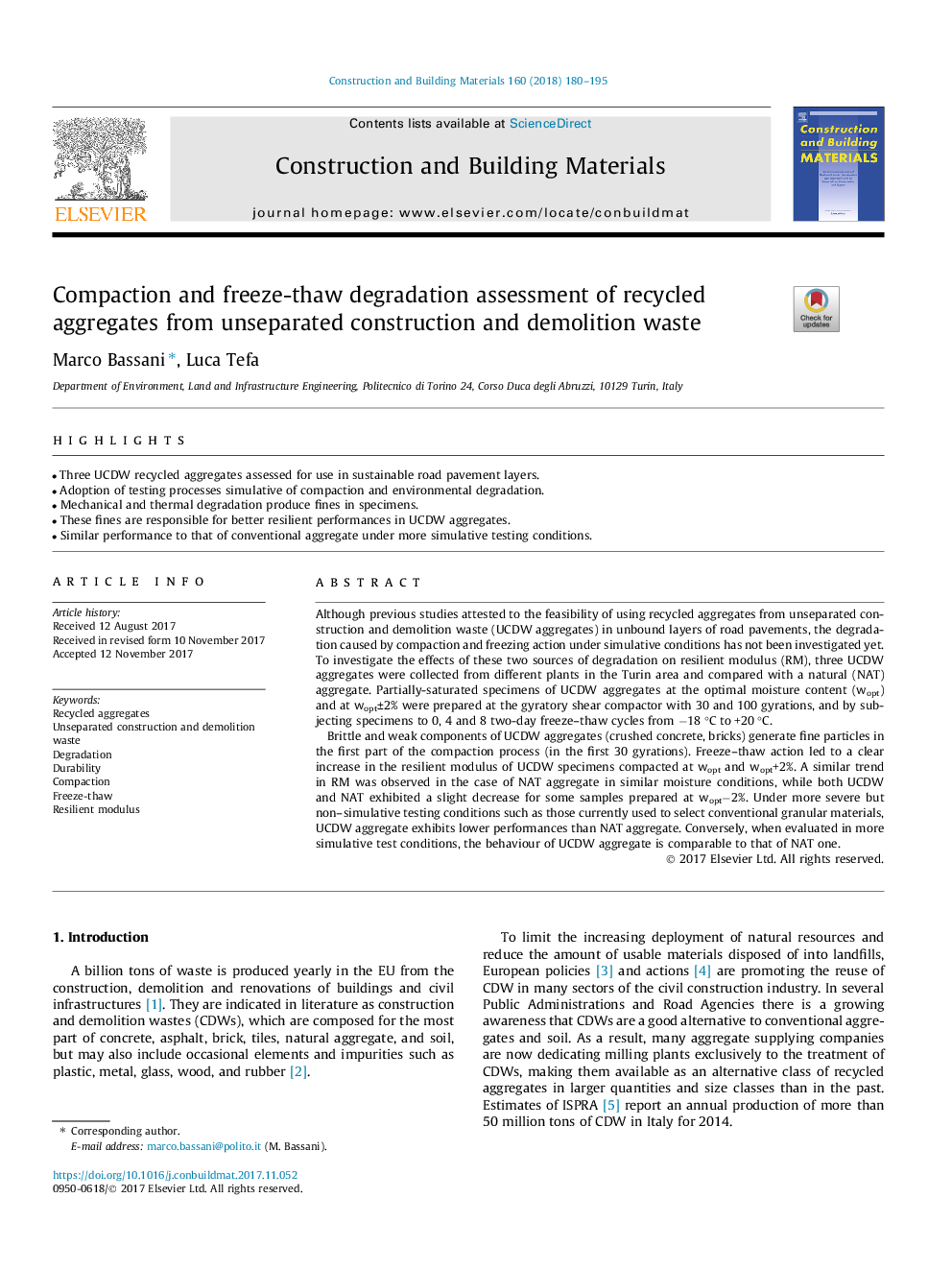| Article ID | Journal | Published Year | Pages | File Type |
|---|---|---|---|---|
| 6716972 | Construction and Building Materials | 2018 | 16 Pages |
Abstract
Brittle and weak components of UCDW aggregates (crushed concrete, bricks) generate fine particles in the first part of the compaction process (in the first 30 gyrations). Freeze-thaw action led to a clear increase in the resilient modulus of UCDW specimens compacted at wopt and wopt+2%. A similar trend in RM was observed in the case of NAT aggregate in similar moisture conditions, while both UCDW and NAT exhibited a slight decrease for some samples prepared at woptâ2%. Under more severe but non-simulative testing conditions such as those currently used to select conventional granular materials, UCDW aggregate exhibits lower performances than NAT aggregate. Conversely, when evaluated in more simulative test conditions, the behaviour of UCDW aggregate is comparable to that of NAT one.
Related Topics
Physical Sciences and Engineering
Engineering
Civil and Structural Engineering
Authors
Marco Bassani, Luca Tefa,
